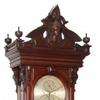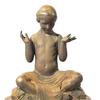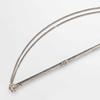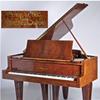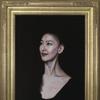Early American Carousel Sculptures Find New Home at the Crocker
- August 04, 2020 15:33
The Crocker Art Museum in Sacramento, Calif., has welcomed to its collection six hand-carved carousel animal sculptures by top makers from the golden age of carousels. The menagerie includes a deer, giraffe, horse, goat, bear, and greyhound, and is a generous gift from the renowned collection of the Freels Foundation.
The golden age of carousels spanned the 1880s through the 1920s, when resorts and cities throughout the United States and England featured them in their amusement parks. Most carousel animals were horses and were based on the French 17th-century origins of the ride. Additional menagerie animals were later added, including lions, tigers, giraffes, deer, rabbits, goats, pigs, ostriches, bears, and dogs.
The best carousel carvers were highly trained, their work literally sculpture in motion. Today, carousel sculpture is grouped into three basic carving styles: the Philadelphia Style, the Coney Island Style, and the County Fair Style, the latter being smaller, more simply carved animals intended for traveling fairs.
The Philadelphia Style includes figures by The Dentzel Company and is generally considered the most realistic and graceful. The Dentzel Company created the giraffe, horse, goat, and bear now in the Crocker’s collection. Daniel Müller apprenticed at the Dentzel company prior to founding his own company, D.C. Müller & Bro., in 1902. Müller’s training at the Pennsylvania Academy of Fine Arts is evident in the skillful carving of the deer.
In contrast to the Philadelphia style, the Coney Island style boasted flashier decoration, including silver or gold leaf and sometimes glass jewels. This ornate style is exemplified by Charles Loof’s classic greyhound.
The sculptures are now installed inside and just outside the Crocker Art Museum’s Setzer Foundation Auditorium. Visit the museum website for visitor guidelines and opening updates: https://www.crockerart.org/








